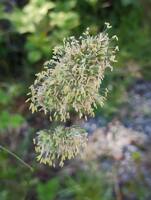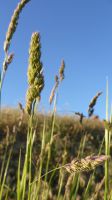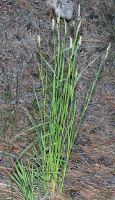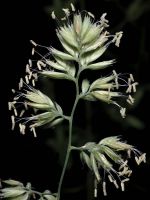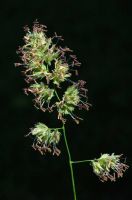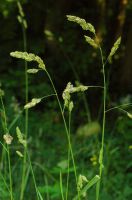Distribution: Occurring on both sides of the Cascades crest in Washington; Alaska to California, east across North America to the Atlantic Coast.
Habitat: Disturbed areas such as meadows, fields, roadsides, and forest edges; common forage plant; also planted in logged areas in the mountains.
Flowers: June-August
Origin: Introduced from Eurasia and northern Africa
Growth Duration: Perennial
Conservation Status: Not of concern
Pollination: Wind
Strongly tufted perennial, the culms hollow, up to 12 dm. tall.
Sheaths closed, usually glabrous; ligules 3-9 mm. long, sparsely pubescent, the upper half usually turned back and split in several places; blades flat, 3-11 mm. broad, the two margins freed from the sheath at different levels.
Inflorescence a dense panicle 3-15 cm. long; spikelets usually 3-flowered, one-sided, compressed, 5-9 mm. long; glumes 4-6 mm. long, keeled, the first lopsided, 2-nerved, with stiff hairs along the keel, the second about equal to the first, narrower, 1-nerved, both with a soft, short, awn-like tip; lemmas 5-8 mm. long, with an awn tip about 1 mm. long
Publication: Sp. Pl. 1: 71. 1753. 1753.
Dactylis glomerata L. var. detonsa Fr.
Dactylis glomerata L. var. vivipara Parl.
PNW Herbaria: Specimen records of Dactylis glomerata in the Consortium of Pacific Northwest Herbaria database
WA Flora Checklist: Dactylis glomerata checklist entry
OregonFlora: Dactylis glomerata information
E-Flora BC: Dactylis glomerata atlas page
CalPhotos: Dactylis glomerata photos




